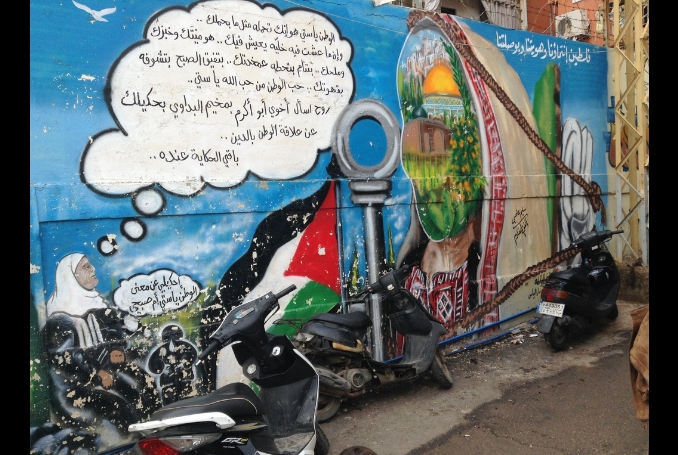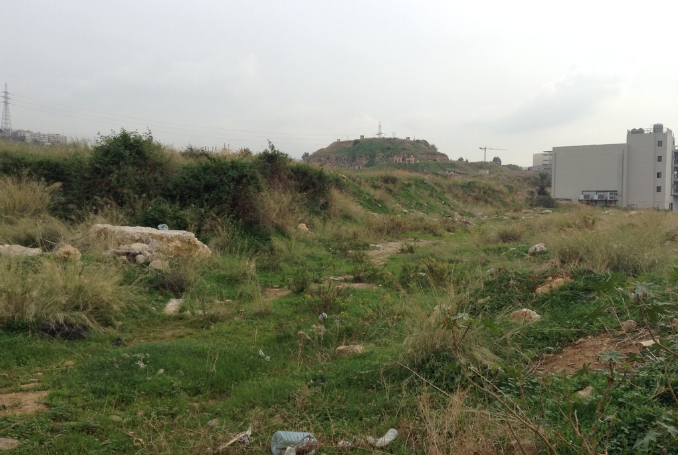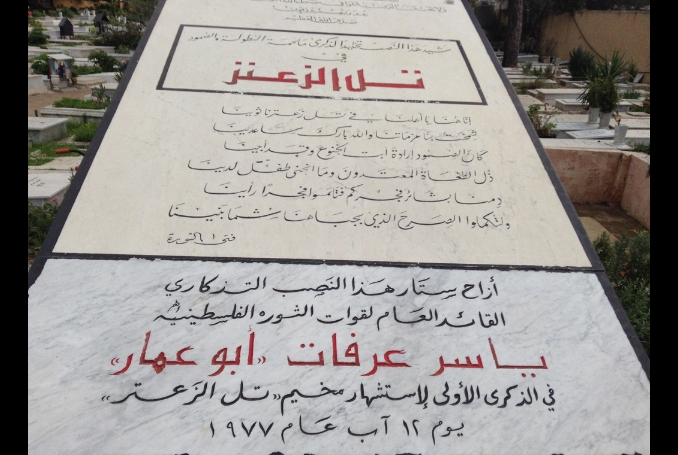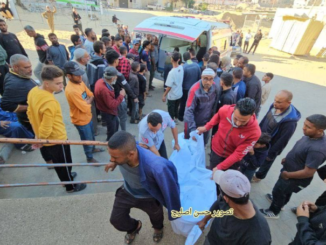
By Marion Kawas
Lessons lost from Beirut to Ramallah
The Palestinian resistance movement looked very different 45 years ago in the early 1970s. With a significant presence in Lebanon, the movement and international activists that supported it found themselves in a unique environment. Progressive organizations from across the world, including AIM (American Indian Movement), were hosted by various Palestinian groups and visited offices, charities, the PLO Research Center and of course the Palestinian refugee camps.
As one of those visiting activists, I was amazed by the depth and breadth of what was then being achieved, especially in intellectual research and cultural development. The refugee camps at that period represented Palestinian pride and struggle rather than charity and victimhood.
Returning last month held mixed emotions…certainly, things would have changed but how and in what way? The case of the Tel Zaatar camp and the PLO Research Center, both now destroyed and “invisible”, highlight the obscured history of this period of Palestinian resistance.
Many parts of Beirut and even the south of Lebanon are in a frenzy of over-development against a background of failing infrastructure and a dysfunctional central government. In many areas, there is nothing left to recognize from 45 years ago, especially given the destruction that occurred during the years of the devastating civil war and the subsequent 1982 Israeli military invasion.
Physically speaking, the Palestinian refugee camps that still remain (some were destroyed) were one of the few places that still seemed familiar, in part due to the official and discriminatory building restrictions. But the narrow damp alleyways, the spiderweb of overhead electrical wires, the beautifully painted murals at the entrance of many camps…all of these evoked memories. However, the camps located in Beirut despite the familiar surroundings, demographically no longer contain a majority of Palestinian residents due to recent influxes of refugees from Syria and foreign workers; Lebanon has the highest per capita refugee population in the world today, something Western countries would never accommodate nor tolerate.

One of our objectives was to try to find the remains of Tel Zaatar refugee camp, which was destroyed early on in the civil war in 1976. It was known as one of the most militant and organized camps and had the misfortune of being in the wrong “geographic area” of Beirut; I had visited it often and even lived there for a short time. Our host from Burj al Barajneh camp helped to drive us around, stopping passersby and asking about where the camp was, most of whom were totally unaware of even its previous existence. Although we knew the general location, we were attempting to demarcate the exact perimeter of where the camp once stood. Now, there is nothing but an empty, deserted and garbage-filled area that seems to have not been touched since it was razed to the ground and all signs of life removed.
It’s desolate, and there is no plaque or memorial, no evidence whatsoever that a vibrant Palestinian camp of tens of thousands of people once lived here, and that at least 2000 refugees died there during the brutal three-month siege of the camp. After several exhausting hours, we felt we had achieved the best “mapping” we could of where the camp had been. One more segment of Palestinian history that the world seemed intent on erasing!
The next stop was Shatila camp and the Palestinian martyr’s cemetery. There, by chance, we discovered what is probably the only public memorial to Tel Zaatar camp in Beirut, a large plaque and headstone dedicated in 1977 by the late Yasser Arafat. The cemetery also contains the graves of many Palestinian leaders and intellectuals assassinated by Israeli special forces, including Ghassan Khanafani, Kamal Nasser, Kamal Adwan, Muhammed Youssef Al-Najjar, and Majed Abu Sharar. Looking at the row upon row of graves and headstones, large and small, one had to question what value today’s Palestinian leadership places on these sacrifices.

The PLO Research Center, once a renowned hub of Palestinian analysis and extensive archiving of all things written on Palestine, has suffered the same fate as Tel Zaatar. Its resources and archives were looted by invading Israeli forces in 1982 and partially later recovered. However, in 1983, as the last Palestinian institution allowed to remain in Beirut after the civil war, it was hit by a car bomb that killed 20 people and injured many more. In the ensuing years, the remaining Center’s archives were allowed to wither away, some reports say in a military desert camp in Algeria.
Why are such vital segments of Palestinian history now so obscured and difficult to trace and honor? There have always been reactionary forces in Lebanon that are virulently anti-Palestinian and there are significant restrictions on Palestinian rights in employment, education and other areas. However, the role of the Palestinian Authority in suppressing the record and narratives of this period of the Palestinian struggle, whether intentional or not, is also pivotal. The function of the Research Center was replaced by something called the Palestinian National Archives as soon as the PA took power in Ramallah.
The focus of this new archives was supposedly “state-building” and the director’s statement on its opening claimed that “a process of institution building immediately began as a stepping-stone for building the free and independent state . . . The main incentive [for building the archive] was our firm belief in the necessity of preserving the memory of our people, and the memory of its nascent entity, the Palestinian National Authority.” Words that might have been believable to some 25 years ago but now stand as a cruel mockery and indictment of the Oslo Process and its impact on the Palestinian struggle.
The history of what the Palestinian movement had achieved in Beirut during the 1970s and the fruits of this Palestinian renaissance that embodied the best thinkers of the time, was a history that did not sit well with the new objectives of the PA. That period of struggle represented a dedication and courage that puts to shame the now openly collaborationist nature of the PA. As such, it cannot be celebrated or even revived by the current Palestinian leadership, because it raises too many troubling questions about where the Palestinian movement stands now and the lessons lost on the road from Beirut to Ramallah.
(Part 2 To Follow – Sumoud Lives on in Palestinian Camps in Lebanon)
– Marion Kawas is a member of the Canada Palestine Association and co-host of Voice of Palestine. She contributed this article to PalestineChronicle.com. Visit: www.cpavancouver.org.







